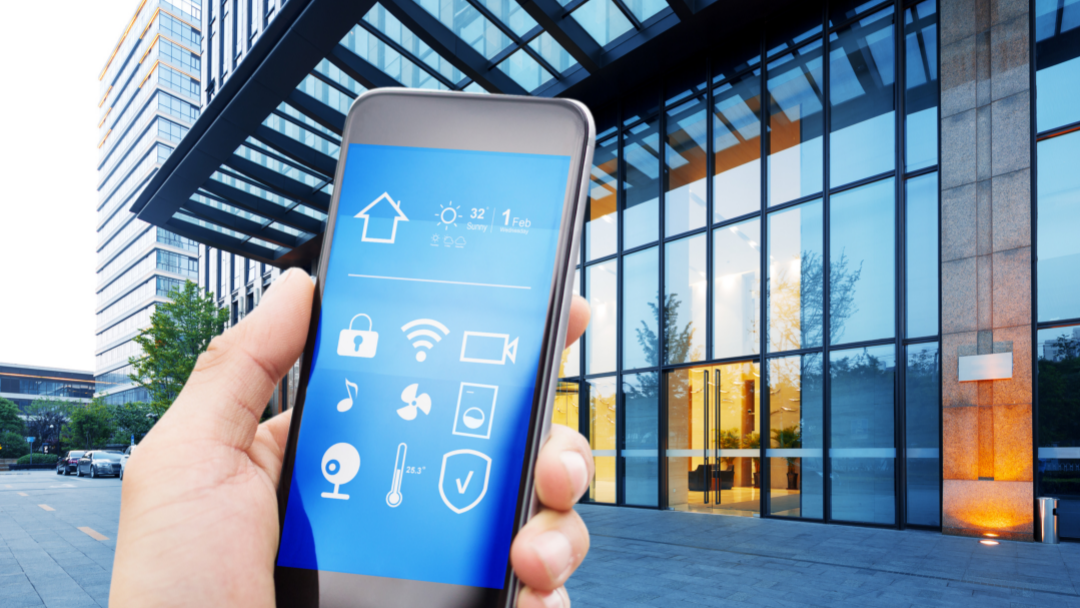A smart building is a building that uses data analytics to self-adjust according to context. It optimizes the use of resources, maximizes the comfort and health of its occupants, and is able to discover patterns in behavior that might require further intervention.
A smart building needs to be integrated into the Internet of Things (IoT) to collect relevant data on its occupants, then analyze and adjust its resources according to the patterns it learns about human interaction with itself.
It’s easier said than done, of course, but the combination of IoT devices, data analytics, and machine learning makes a smart building “smart,” turning a vast amount of data into actions that are carried out in real time.
How a Smart Building Learns: The Internet of Things
The Internet of Things refers to the creation of networks to which certain devices connect and that, in turn, allows these devices to exchange information with one another. As the name suggests, an Internet connection makes this interaction possible.
Devices connected to a specific network (for example, the one of a building) gather data through sensors and applications. They can also analyze the information that exists in the shared network.
What’s important is that the technology in question is able to communicate across a network without human intervention. IoT sensors are all around us. You might wear one on your wrist if you have a smartwatch.
Smart Building Application Examples
This technology is still evolving, but anything that can generate data via IoT can be analyzed – and, therefore, optimized – to make a building smarter. In other words, the buildings of the future will likely have a lot of sensors linking them to the IoT.
For example, sensors in rooms or workspaces could detect occupancy levels, and the building’s HVAC system would respond accordingly, increasing or decreasing ventilation or temperature.
A smart building could also notice that there’s a need for more workspace or that a component of its technology needs more frequent maintenance because of high use.
Key Benefits to a Smart Building
With so many possible future applications as the technology evolves, there are also many benefits to smart space technology. In short, smart buildings can make the operation of physical spaces much more efficient with a series of seemingly small adjustments.
A Healthier and More Productive Space
The prospect of a healthier home or office that smart buildings can offer has caught the attention of many researchers.
A two-year study conducted in the UK found that carbon dioxide levels in the workplace noticeably impacted employees’ performance as well as the time it took them to complete the provided test. One building’s participants reflected a 60% faster work speed at lower carbon dioxide levels.
The average indoor concentration of this nontoxic gas is understudied. Still, it’s easy to imagine that improper ventilation is causing at least some degree of negative consequences for the workforce at large. A smart building equipped with carbon dioxide sensors could significantly reduce, or perhaps eliminate, its ill effects.
Better air quality means better health. A more healthy work environment could, among other things, increase productivity.
Carbon dioxide is just one factor that smarter buildings could help remediate. Similarly, IoT-connected tech could monitor air temperature. Or, it could make sure that the coffeemaker brews fresh coffee just before employees typically take their coffee break.
While these might appear to be minor adjustments, the overall benefit of this technology collectively and over time could be quite significant.
A Decrease in Operational Costs
The efficiencies of a smart building may also lead, as one might expect, to reduced operational costs. The technology exists to directly and noticeably reduce the consumption of resources. For example, it can intelligently draw from the power grid or manage HVAC systems more effectively.
But there are also more subtle benefits. For one, every building has unseen inefficiencies that add up over time. With a centralized platform, however, a smart building can address these and provide easy access to all relevant data in the event of some malfunction.
Smart building technology notices the little things that humans might sometimes be aware of but not always remember, communicate, or see as a part of a larger pattern. When the building can monitor itself, it operates much more smoothly.
One of the core concepts of smart buildings is adaptability. Whether short-term or long-term, the idea is that the building can monitor itself and make adjustments in different areas. The people living or working there can change. Weather and climates vary over time. As the technology develops, smart buildings will likely be increasingly adaptable.
Improvements in Sustainability
Environmental concerns are of ever-increasing importance. The World Resource Institute estimates that buildings comprise one third of the energy demand across the globe. These numbers make sustainability a major concern in the construction of new buildings as well as the retrofitting of old ones.
The good news is that a smart building both lowers costs and reduces the building’s carbon footprint. It can help manage not only energy but also water consumption, and it can help with waste management. Less wasted energy is not only cheaper but also better for the environment.
As IoT technology improves, it’s becoming easier to achieve these simultaneous goals of saving money and building greener. Many major companies are investing in the technology needed to construct smart buildings that self-adjust for energy efficiency in real time.
A Final Word
The more widespread smart building technology becomes, the more it will be researched and further developed. There are potential advantages to smarter spaces that we cannot even imagine at this point.
However, what is certain is that this technology is already here and is here to stay. The ways that people interact with physical space are evolving, and we have much to benefit from the results.
Last Updated on August 2, 2022 by Josh Mahan




